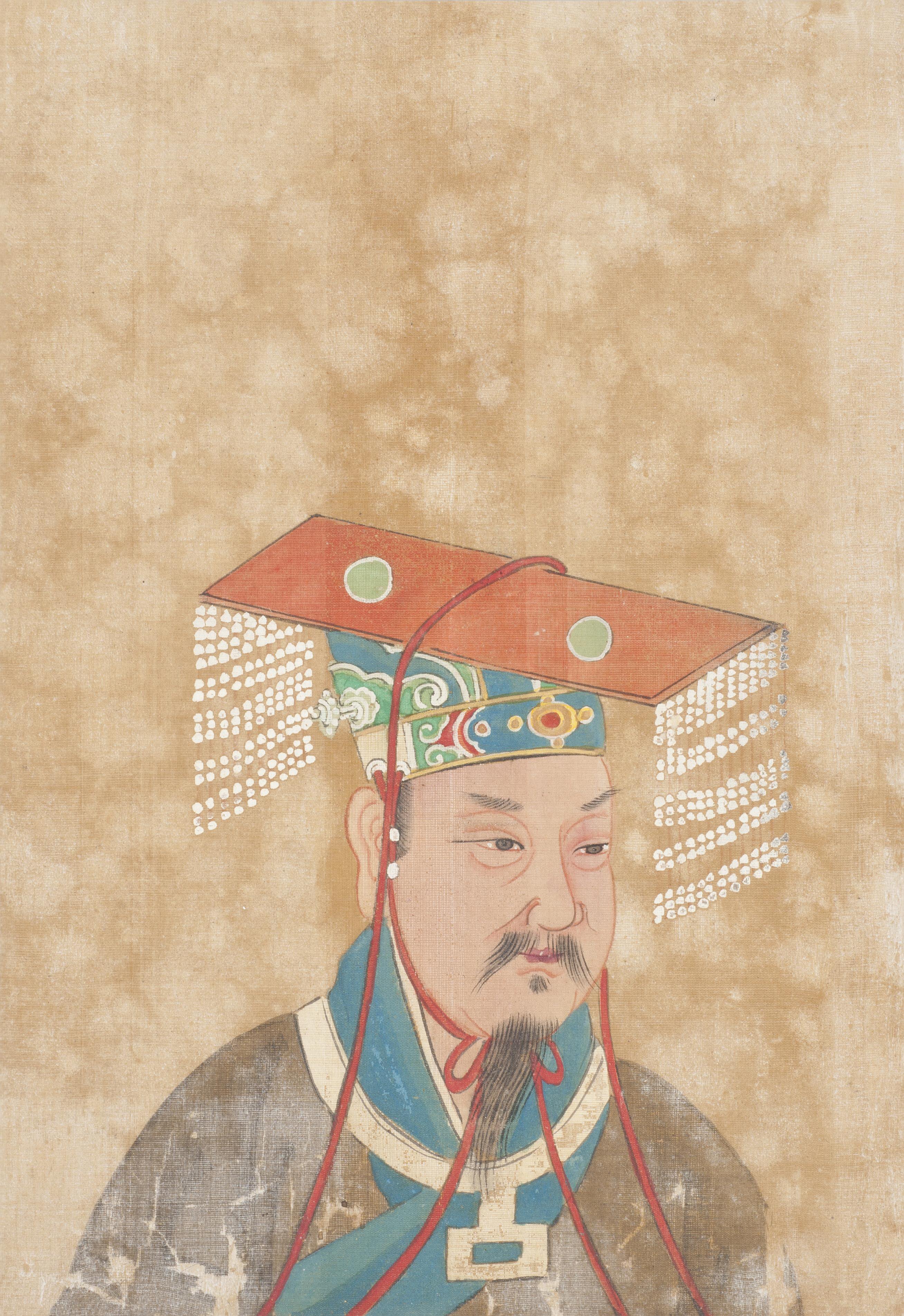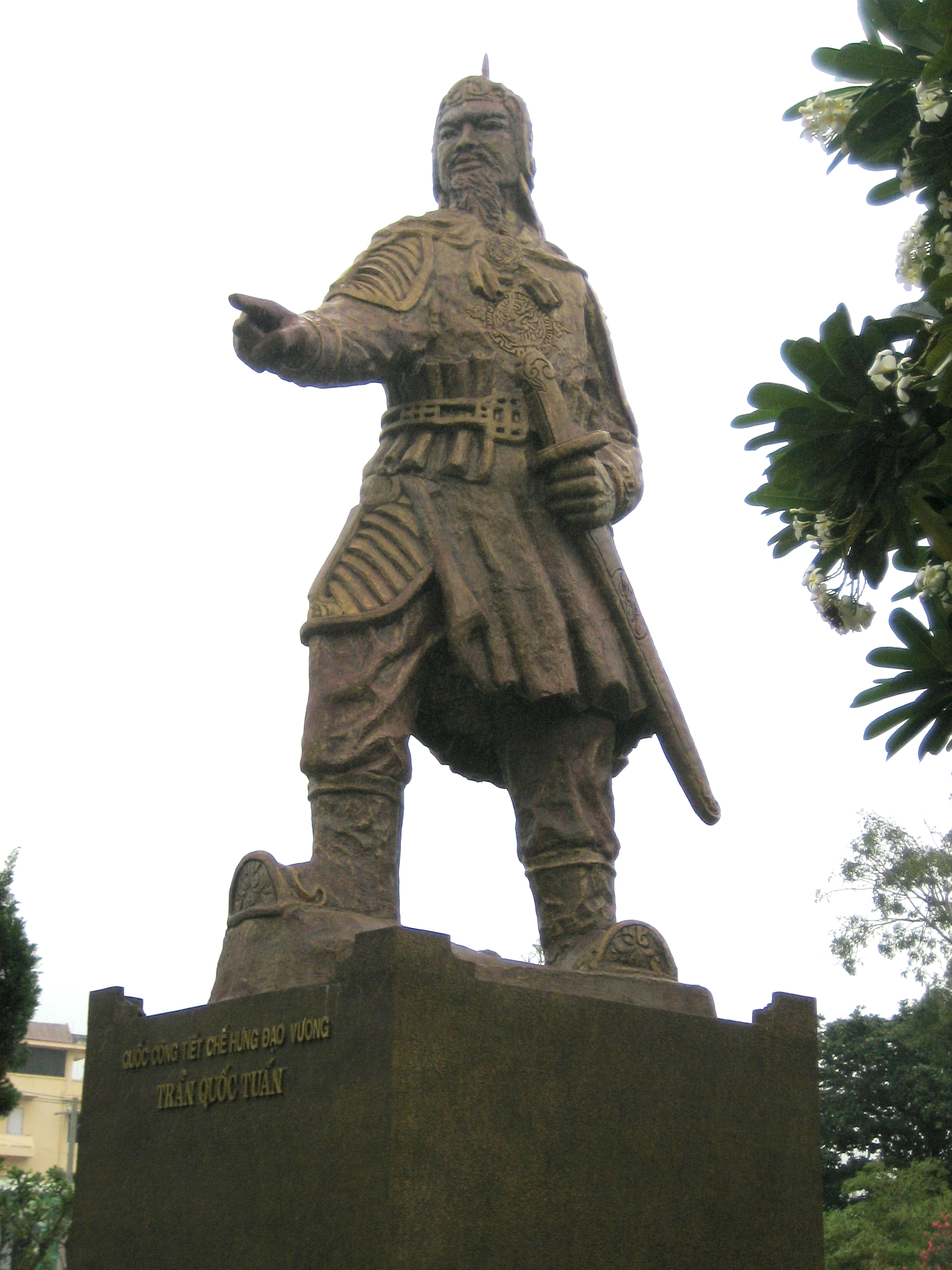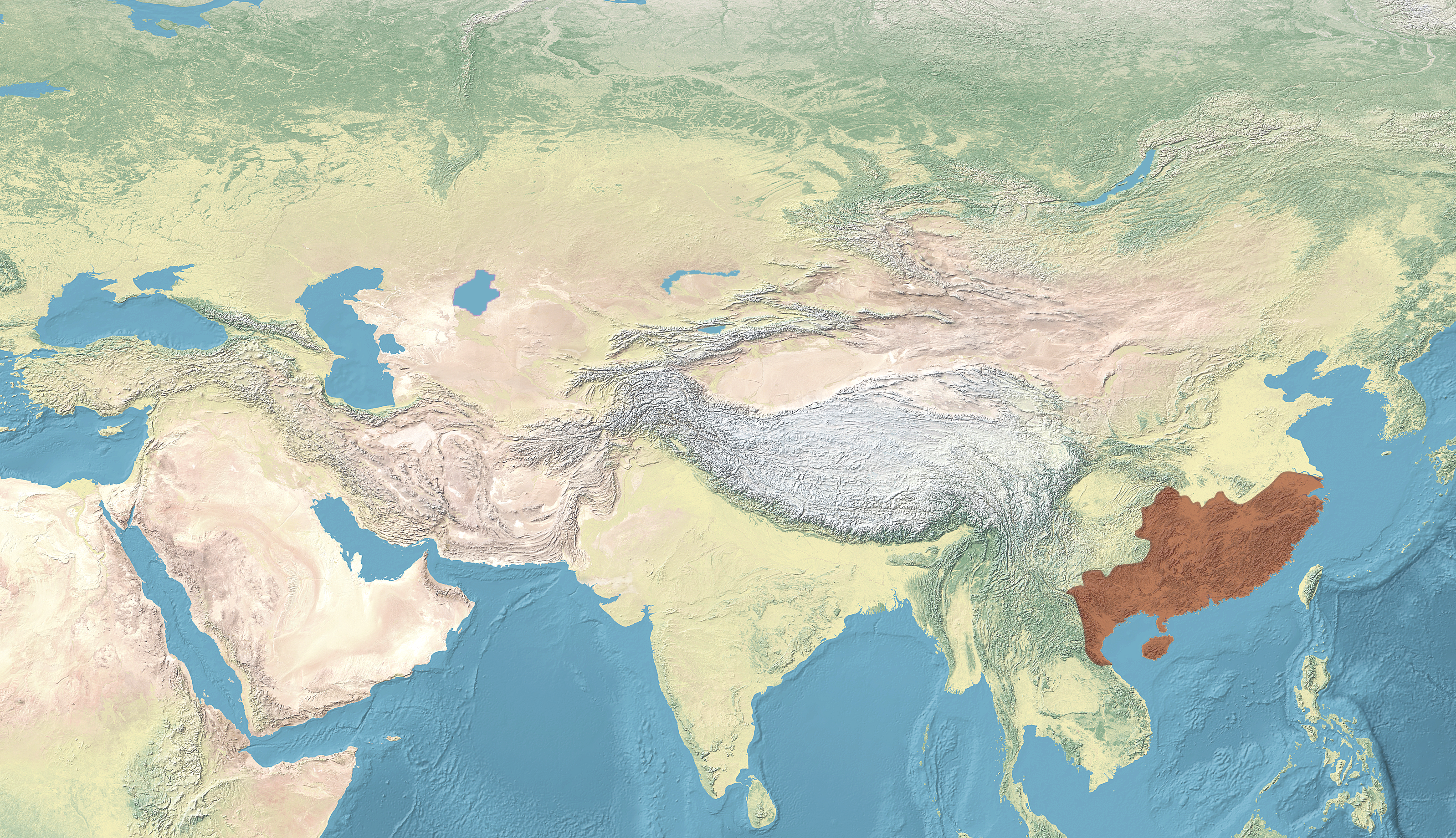|
State Of Chen
Chen () was a state founded by Duke Hu of Chen during the Zhou dynasty of ancient China. It existed from c. 1045 BC–479 BC. Its capital was Wanqiu, in present-day Huaiyang County in the plains of eastern Henan province. Chen, the 4th most popular Chinese surname in the world, and members of the Hu clan, the 13th most popular Chinese surname in the world, would claim descent from the Duke Hu of Chen who was in turn descended from the legendary Emperor Shun. At its peak, Chen encompassed fourteen cities in modern-day Henan and Anhui. Name It is written 陳 the same as the Chen surname. In ancient texts, it is sometimes misspelled as 敶, also pronounced Chen. Territory Chen was originally from Taihao (太昊、太皞), the capital of Fuxi's clan.《左傳·昭公十七年》:陈,大皞之虚也 It was south of the Yellow River. Capital Its capital was Wanqiu, in present-day Huaiyang County in the plains of eastern Henan province. Zhu Xi explains that Wanqiu mea ... [...More Info...] [...Related Items...] OR: [Wikipedia] [Google] [Baidu] |
Chu (state)
Chu (, Old Chinese: ''*s-r̥aʔ'') was an Ancient Chinese states, ancient Chinese state during the Zhou dynasty. Their first ruler was King Wu of Chu in the early 8th century BC. Chu was located in the south of the Zhou heartland and lasted during the Spring and Autumn period. At the end of the Warring States period it was annexed by the Qin (state), Qin in 223 BC during the Qin's wars of unification. Also known as Jing () and Jingchu (), Chu included most of the present-day provinces of Hubei and Hunan, along with parts of Chongqing, Guizhou, Henan, Anhui, Jiangxi, Jiangsu, Zhejiang, and Shanghai. For more than 400 years, the Chu capital Danyang (Chu), Danyang was located at the junction of the Dan River (China), Dan and Xi Rivers near present-day Xichuan County, Henan, but later moved to Ying (Chu), Ying. The house of Chu originally bore the Chinese surname#Xing, ancestral temple surname Nai ( OC: /*rneːlʔ/) which was later written as Mi (surname), Mi ( OC: /*meʔ/). Th ... [...More Info...] [...Related Items...] OR: [Wikipedia] [Google] [Baidu] |
King Wu Of Zhou
King Wu of Zhou (; died ), personal name Ji Fa, was the founding king of the Chinese Zhou dynasty. The chronology of his reign is disputed but is generally thought to have begun around 1046 BCE and ended with his death three years later. King Wu was the second son of Ji Chang (posthumously King Wen) and Tai Si. In most accounts, his older brother Bo Yikao was said to have predeceased his father, typically at the hands of King Zhou of Shang, the last king of the Shang dynasty; in the '' Book of Rites'', however, it is assumed that his inheritance represented an older tradition among the Zhou of passing over the eldest son. (Fa's grandfather Jili had likewise inherited Zhou despite two older brothers.) Upon his succession, Fa worked with his father-in-law Jiang Ziya to accomplish an unfinished task: overthrowing the Shang dynasty. During the ninth year of his reign, Fa marched down the Yellow River to the Mengjin ford and met with more than 800 dukes. He constructed an ... [...More Info...] [...Related Items...] OR: [Wikipedia] [Google] [Baidu] |
Đại Việt
Đại Việt (, ; literally Great Việt), was a Vietnamese monarchy in eastern Mainland Southeast Asia from the 10th century AD to the early 19th century, centered around the region of present-day Hanoi. Its early name, Đại Cồ Việt,(chữ Hán: 大瞿越) was established in 968 by the ruler Đinh Bộ Lĩnh after he ended the Anarchy of the 12 Warlords, until the beginning of the reign of Lý Thánh Tông (r. 1054–1072), the third emperor of the Lý dynasty. Đại Việt lasted until the reign of Gia Long (r. 1802–1820), the first emperor of the Nguyễn dynasty, when the name was changed to Việt Nam in 1804. Under rule of Emperor at home, king abroad, bilateral diplomacy with Imperial China, it was known as Principality of Giao Chỉ (chữ Hán: 交趾) (975–1164) and Kingdom of Annam (chữ Hán: 安南) (1164–1804) when Emperor Xiaozong of Song upgraded Đại Việt's status from principality to kingdom. Đại Việt's history was divided into the rule ... [...More Info...] [...Related Items...] OR: [Wikipedia] [Google] [Baidu] |
Sino-Vietnamese Vocabulary
Sino-Vietnamese vocabulary (, Chữ Hán: 詞漢越, literally 'Chinese-Vietnamese words') is a layer of about 3,000 monosyllabic morphemes of the Vietnamese language borrowed from Literary Chinese with consistent pronunciations based on Middle Chinese. Compounds using these morphemes are used extensively in cultural and technical vocabulary. Together with Sino-Korean and Sino-Japanese vocabularies, Sino-Vietnamese has been used in the reconstruction of the sound categories of Middle Chinese. Samuel Martin grouped the three together as "Sino-Xenic". There is also an Old Sino-Vietnamese layer consisting of a few hundred words borrowed individually from Chinese in earlier periods, which are treated by speakers as native words. More recent loans from southern Chinese languages, usually names of foodstuffs such as ' Chinese sausage' (from Cantonese ), are not treated as Sino-Vietnamese but more direct borrowings. Estimates of the proportion of words of Sinitic origin in the Vietname ... [...More Info...] [...Related Items...] OR: [Wikipedia] [Google] [Baidu] |
Hồ Dynasty
The Hồ dynasty (Vietnamese: , chữ Nôm: 茹胡; Vietnamese: ''triều'' ''Hồ'', chữ Hán: wikt:朝, 朝wikt:胡, 胡), officially Đại Ngu (; chữ Hán: 大虞), was a short-lived List of Vietnamese dynasties, Vietnamese dynasty consisting of the reigns of two monarchs, Hồ Quý Ly and his second son, Hồ Hán Thương. The practice of bequeathing the throne to a designated son (not simply passing it on to the eldest) was similar to what had happened in the previous Trần dynasty and was meant to avoid sibling rivalry. Hồ Quý Ly's eldest son, Hồ Nguyên Trừng, played his part as the dynasty's military general. In 2011, UNESCO declared the Citadel of the Hồ Dynasty in Thanh Hóa Province a world heritage site. The Hồ dynasty was conquered by the Chinese Ming dynasty in 1407. Hồ Quý Ly (c. 1335 – c. 1407) Origin and background The Hu (surname), Hồ/Hú family originated around modern-day Zhejiang province in the Southern Tang, Southern Tang dynasty ... [...More Info...] [...Related Items...] OR: [Wikipedia] [Google] [Baidu] |
Hồ Quý Ly
Hồ Quý Ly ( vi-hantu, 胡季犛, 1336 – 1407?) ruled Đại Ngu (Vietnam) from 1400 to 1401 as the founding emperor of the short-lived Hồ dynasty. Quý Ly rose from a post as an official served the court of the ruling Trần dynasty and a military general fought against the Cham forces during the Cham–Vietnamese War (1367–1390). After his military defeat in the Ming Conquest of Dai Ngu (1406–1407), he and his son were captured as prisoners and were exiled to China, while the Dai Viet Empire became the thirteenth province of Ming Empire. Biography Early career Hồ Quý Ly was born in 1336 at Đại Lại village, Vĩnh Ninh district, Ái Châu, Thanh Đô town with aristocracy's standing. His birth name was Lê Quý Ly (黎季犛), courtesy name Lý Nguyên (理元) or Nhất Nguyên (一元), as he was adopted by Lê Huan, after whom he took the family name. Descended from a Chinese family named Hu who had migrated from modern Zhejiang (China) to Dien Ch ... [...More Info...] [...Related Items...] OR: [Wikipedia] [Google] [Baidu] |
Vietnam
Vietnam, officially the Socialist Republic of Vietnam (SRV), is a country at the eastern edge of mainland Southeast Asia, with an area of about and a population of over 100 million, making it the world's List of countries and dependencies by population, fifteenth-most populous country. One of two communist states in Southeast Asia, Vietnam shares land borders with China to the north, and Laos and Cambodia to the west. It shares Maritime boundary, maritime borders with Thailand through the Gulf of Thailand, and the Philippines, Indonesia, and Malaysia through the South China Sea. Its capital is Hanoi and its largest city is Ho Chi Minh City. Vietnam was inhabited by the Paleolithic age, with states established in the first millennium BC on the Red River Delta in modern-day northern Vietnam. Before the Han dynasty's invasion, Vietnam was marked by a vibrant mix of religion, culture, and social norms. The Han dynasty annexed Northern and Central Vietnam, which were subs ... [...More Info...] [...Related Items...] OR: [Wikipedia] [Google] [Baidu] |
Trần Dynasty
The Trần dynasty (Vietnamese language, Vietnamese: Nhà Trần, chữ Nôm: 茹陳; Vietnamese language, Vietnamese: triều Trần, chữ Hán: [wikt:朝]wikt:陳, 朝wikt:陳, 陳), officially Đại Việt (Chữ Hán: 大越), was a List of Vietnamese dynasties, Vietnamese dynasty that ruled from 1225 to 1400. The dynasty was founded when emperor Trần Thái Tông ascended to the throne after his uncle Trần Thủ Độ orchestrated the overthrow of the Lý dynasty. The Trần dynasty defeated three Mongol invasions of Vietnam, Mongol invasions, most notably during the decisive Battle of Bạch Đằng (1288), Battle of Bạch Đằng River in 1288. The final emperor of the dynasty was Trần Thiếu Đế, Thiếu Đế, who was forced to abdicate the throne in 1400, at the age of five years old in favor of his maternal grandfather, Hồ Quý Ly. The Trần improved Chinese gunpowder, enabling them to Nam tiến, expand southward to defeat and vassalize the Champa. The ... [...More Info...] [...Related Items...] OR: [Wikipedia] [Google] [Baidu] |
Chen Dynasty
The Chen dynasty (), alternatively known as the Southern Chen (南陳 / 南朝陳) in historiography, was a Dynasties in Chinese history, Chinese imperial dynasty and the fourth and last of the Northern and Southern dynasties#Southern dynasties, Southern dynasties during the Northern and Southern dynasties period. Following the Liang dynasty, the Chen dynasty was founded by Emperor Wu of Chen, Chen Baxian (Emperor Wu). The Chen dynasty further strengthened and revitalized the economy and culture of southern China, and made territorial expansions northward, laying the foundation for future dynasties. It was conquered by the Sui dynasty in 589, marking an end to the Northern and Southern dynasties period in Chinese history. The descendants of the Chen imperial family continued to hold powerful high-ranking positions in the imperial courts of both the Sui and Tang dynasty, Tang dynasties. History Founding and expansion: Chen Baxian In the twilight of the Liang dynasty (548–55 ... [...More Info...] [...Related Items...] OR: [Wikipedia] [Google] [Baidu] |
Ying (Chu)
Ying () was a capital city of the State of Chu during the Spring and Autumn and Warring States periods of Chinese history. In the early years of Chu's development, the state capital was located at Danyang, near modern-day Xichuan County in Henan Province. Following a number of battles with neighboring states the Chu capital moved to Ying, near modern-day Jingzhou City on the Jianghan Plain in the western part of Hubei Province. Date of relocation There are four separate theories as to the date that relocation of the capital took place: * Some sources believe that King Wu of Chu relocated the capital to Ying in 706 BCE. Qing dynasty historian Song Xiangfeng () in his ''Dynastic records • Research on relocation of Chu Yuxiong’s residence at Danyang to Ying by King Wu'' () infers the date of the move from the timing of King Wu's wars with the States of Sui and Yun. Song argues that with wars waging all around and his rule of the Eastern Han River just beginning, King Wu w ... [...More Info...] [...Related Items...] OR: [Wikipedia] [Google] [Baidu] |
Chinese Surname
Chinese surnames are used by Han Chinese and Sinicization, Sinicized ethnic groups in Greater China, Korea, Vietnam and among overseas Chinese communities around the world such as Singapore and Malaysia. Written Chinese names begin with surnames, unlike the Western name order, Western tradition in which surnames are written last. Around 2,000 Han Chinese surnames are currently in use, but the great proportion of Han Chinese people use only a relatively small number of these surnames; 19 surnames are used by around half of the Han Chinese people, while 100 surnames are used by around 87% of the population. A report in 2019 gives the List of common Chinese surnames, most common Chinese surnames as Wang (surname), Wang and Li (surname 李), Li, each shared by over 100 million people in China. The remaining eight of the top ten most common Chinese surnames are Zhang (surname), Zhang, Liu, Chen (surname), Chen, Yang (surname), Yang, Huang (surname), Huang, Zhao (surname), Zhao, Wu (surn ... [...More Info...] [...Related Items...] OR: [Wikipedia] [Google] [Baidu] |
Battle Of Chengpu
The Battle of Chengpu took place in 632 BC between the State of Jin and the State of Chu and its allies during the Spring and Autumn period of Chinese history. It was the first major battle in the protracted conflict between the states of the Yellow River valley, and the states of the Yangtze River valley. The Jin victory confirmed the hegemony of Duke Wen and checked Chu ambitions in the north for a period. chinadetail.com Background Following the death of Duke Huan of Qi in 643 BC, the state of Chu steadily extended its influence northward, absorbing half a dozen smaller states as its satellites. In 636 BC, Chong'er, a ducal prince of Jin, after nineteen years in exile traveling throughout numerous states, came to power as Duke Wen of Jin with the help of Duke Mu of Qin. Duke Wen assumed a position of leadership among the states and instituted numerous domestic reforms. In the years leading up to 632 BC, conflict between Jin and Chu became increasingly public and wa ... [...More Info...] [...Related Items...] OR: [Wikipedia] [Google] [Baidu] |








